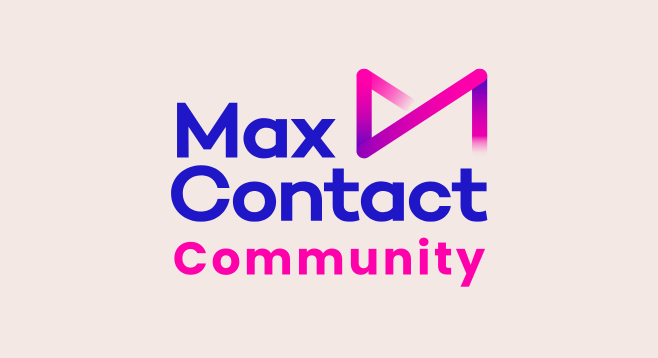Contents
Four common pitfalls when setting targets
Missed targets: what you can learn
Nearly 50% of companies missed revenue targets in the first half of 2024, according to a recent GTM Benchmark report. That’s a business-wide metric, but anyone who’s worked in the contact centre space for any length of time knows missing goals is far from unusual.
A missed target – whether it’s contact rates or customer satisfaction – can feel like failure, but it’s only damaging if you fail to learn from it. When your customer satisfaction scores stay stubbornly below where you want them to be, see it as a wake up call. Grasp the opportunity to analyse the systems and processes that are leaving customers less than impressed and turn a short-term failure into long-term strategic success.
In this article, we’ll show you why targets are often missed and how you can turn them around.
Four common pitfalls when setting targets
Companies that regularly miss targets tend to get one or more of these four things wrong:
- You set too many goals. Setting multiple goals at the same time dilutes focus and resources. Aim to hit a few select targets in any given period.
- You set the wrong targets. Targets must be well thought through, and their potential consequences assessed. For example, you might want to cut call duration times, but if rushing calls causes customer satisfaction to plummet, is the trade-off really worth it?
- You treat targets in isolation. Contact centre targets are often the responsibility of the organisation as a whole. For example, if calls are taking too long, is it because product instructions are unclear? Many contact centre targets go beyond the contact centre.
- You’re inefficient. Sometimes, missed targets are simply down to contact centre inefficiency. In these cases, legacy technology, inadequate training and poor workforce management can be contributing factors.
Missed targets: what you can learn
Generally, regularly missing targets requires a fundamental change of approach. As we see above, targets need to be chosen wisely, and in conjunction with the business as a whole. If you want to improve your customer satisfaction score, the responsibility might be shared across departments, from the contact centre and sales to product and logistics.
And remember, even if a post-call question asks customers specifically about their satisfaction with that interaction, they’re far less likely to see it as positive if their issue is complex, enduring or easily avoidable.
In some organisations, a change in management style may be required. Righting missed targets often means promoting collaboration over siloed thinking, or overseeing a significant reallocation of resources.
Hitting targets: Two step by step examples
Every company misses targets for its own reasons, but here are two simple examples of how contact centre teams might learn from mistakes and turn failure into success.
In brief: how to improve customer satisfaction rates
Step 1: Listen to customer feedback
Use all the data at your disposal across channels (live chat, speech analytics, technical support, social media, calls…), to get an accurate and rounded picture of what customers say about your service.
Step 2: Collaborate across teams
Talk to every department that might be involved. With a broad metric like customer satisfaction, that could mean most of them.
Step 3: Personalise interactions
Put everything needed to streamline and personalise interactions with customers at agents’ fingertips. For example, with MaxContact agents can benefit from a full customer view – including synced, up-to-date details from your CRM, comprehensive contact and note history, plus AI-generated call summaries.
Step 4: Enable easy contact options
Let customers get in touch in the way that suits them best, whether that’s voice calls, live chat, text, email or social media. Properly monitor all channels and reply in a timely manner.
Step 5: Share insights
Share customer feedback with your contact centre team, but also across the organisation. Put processes in place to solve repeated issues.

In brief: 5 steps to improve outbound answer rates
Step 1: Get buy-in
Improving call contact rates may require more targeted resources, better technology, or both. Make sure the business is behind you and make it a core goal for that period.
Step 2: Use data
With the right system, your contact centre data can tell you the best times to call, the scripts that convert most efficiently, which agents need additional training and support, and more.
Step 3: Dial smart
Intelligent contact centre software streamlines the call process, prioritising high value leads first and matching with your very best agents, increasing conversion rates. It can even detect answer machines so agents don’t waste time.
Step 4: Marshall resources
Workforce management is important here. When you’ve identified the times and lists that offer the best chance of success, focus your resources appropriately.
Step 5: Go omnichannel
In some circumstances, a targeted text message reminding customers of an upcoming call, or a polite text after an unanswered call, can improve the overall customer experience.
Conclusion
If you miss a target and then implement the change required to hit it, you not only meet your goal but improve the efficiency of your contact centre (and perhaps parts of your wider organisation) at the same time. If you act on it, a missed target can be the key to growth.
Good technology can help you meet any contact centre target. MaxContact, a cloud contact centre platform, enables sales, service and debt resolution teams to target customers more effectively, have more productive conversations and reduce time spent on routine tasks. It gives managers the insight they need to improve contact centre performance without ramping up costs.
Discover how MaxContact can help your team meet and exceed targets. Book a demo today.





